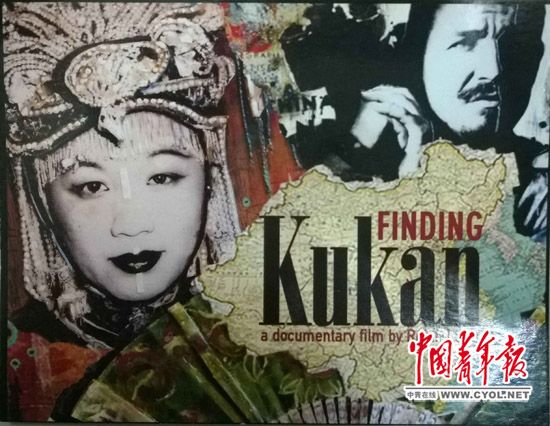
Poster of the wartime documentary (Photo/China Youth Daily)
A documentary about China's resistance against the Japanese invasion during the World War II was shown to Chinese audiences more than 70 years after it was made.
The Oscar winner 'Kukan': The Battle Cry of China, was filmed by American correspondent Rey Scott in the 1930s. The 85-minute movie premiered at the China Three Gorges Museum in southwest China's Chongqing municipality on Tuesday.
It was played for an audience of around 200, mostly scholars and students.
"It was heart-shaking," said Zhang Jin, a professor with Chongqing University who attended the screening. "In the past, young Chinese people could only learn that part of history through books and imagine what happened. The film gives them a chance to actually see it."
Sponsored by Chinese American filmmaker Li Ling-Ai, Scott visited China four times beginning in 1937, where he recorded the destruction of Japanese invaders and the hardship of ordinary people in war-torn China.
The movie premiered in the United States in 1941 and was watched by late U.S. President Franklin Roosevelt. Scott won an Academy Honorary Award for producing the film "with a 16mm camera under the most difficult and dangerous conditions".
The film contains 17-plus minutes showing a two-day air attack by the Japanese invaders in Chongqing, China's wartime capital after the Japanese invasion, in August 1940. Scott managed to record the scenes from the roof of the U.S. embassy. He also filmed the debris and blaze after the bombing.
Zhou Yong, director of the research and collaborative innovation center in Chongqing, said it was his first time to see such vivid depictions of the bombing.
"It was shocking," he said. "Rather than filming the battlefield, the movie focused on the struggle of ordinary people, on how unyielding they were during the war."
The movie has never been screened in China and was considered lost after World War II.
It was re-discovered by Chinese American filmmaker Robin Lung, who spent six years searching for the complete copy of the film and another three years repairing it.
The research and collaborative innovation center of Chongqing has acquired the right of using it for 20 years in China, including the mainland, Hong Kong, Macao and Taiwan.
The year 2015 marks the 70th anniversary of the end of the WWII. In Chongqing, screening of the film will be moved to Hongyan Revolutionary Memorial Hall, a museum dedicated to the Chinese People's War of Resistance Against Japanese Aggression in the city.
Chongqing TV has decided to run it later this year, said Zhou Bo, deputy head of the publicity department of Chongqing. Several other provincial television stations also applied to use it.
















































